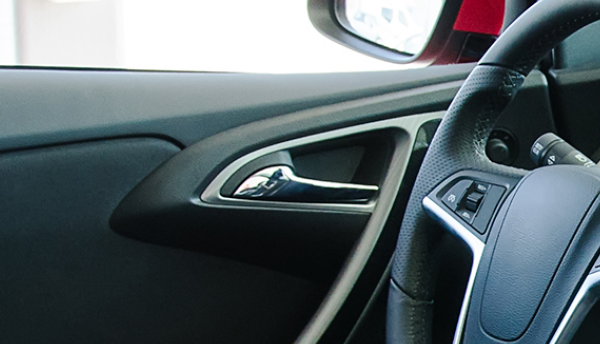
Suppliers are faced with high investment costs, as automakers adopt modular production and more localised sourcing strategies
The shift by Japanese automakers to increase parts sourcing from global locations is starting to put Japanese suppliers in a difficult position. Competitive sourcing has become a challenge for automakers around the globe, leading OEMs to changed procurement strategies. In addition, OEMs are shifting from “integral” to “modular” production to reduce design, development and manufacturing costs.
In September, Honda announced its targets to boost global production by 50% to sixmillion vehicles annually by April 2016. To achieve this, the automaker is altering its parts procurement strategy. In a meeting held last November with suppliers such as Denso and Bosch, Honda said that it will reduce its dependence on affiliates for supply of parts and increase procurement from other suppliers. Suppliers affected by this announcement included Nissan Kogyo, a company in which Honda has a 35% stake. Nissin Kogyo President Eiji Okawara confirmed the announcement, “Any affiliated suppliers that lack sufficient abilities will be relegated to the status of secondary subcontractor.” The company derives 80% of its sales from Honda and has reviewed its operations. As a result, the company is setting up a new test course for its products in Hokkaido and has started producing car brakes at a motorcycle brake plant in Indonesia. Another Honda affiliated supplier, Yachiyo Industry is planning to increase sales of sunroofs and plastic fuel tanks to overseas automakers in a bid to diversify sales from Honda, which accounts for 95% of the company’s sales. Yachiyo has four plants in North America and wants to reduce its dependence on Honda sales to 50% by 2020. Yachiyo plans to focus on manufacturing sunroofs and fuel tanks in order to grow its business.
Japanese automakers are transitioning to modular manufacturing that will utilise fewer parts, developed for cars tailored to the specific needs of different markets. As part of modular manufacturing, parts are standardised for a range of models, which in turn reduces the number of suppliers needed in the manufacturing process. An executive at Nissan says that the structure of OEM-supplier relations will change from a pyramid-shaped one, where an automaker is at the top with a number of tiers below, to a long, vertical one.
Suppliers who are specialising in some parts will benefit from the trend. Japan-based U-shin took the bold step in acquiring a bigger player in the market, Valeo’s car-lock unit, taking almost two years to complete negotiations. Valeo’s car-lock unit generated sales of JPY74.2bn (USD760m) in 2011 and has manufacturing units in ten countries. The acquisition, when completed, will make U-shin the world's top supplier of car lock systems. U-shin's automotive operations had sales of JPY40.7bn (USD416.9m) financial year 2011. U-shin Chairman and President Kohji Tanabe predicts that the standardisation of parts will lead to suppliers doing business with more and more customers. While this may not exactly be true, in the long run it is likely that there will be fewer suppliers for a single component.
This year, Tokai Rubber announced its acquisition of Anvis Group for JPY15bn (USD165m). Tokai is a leading manufacturer of anti-vibration rubber products for the automotive industry, while Anvis is the sixth largest in the segment. The acquisition will help Tokai gain greater access to non-Japanese OEMs, especially in eastern Europe, Africa and other emerging markets and increase its market share in the automotive anti-rubber products market from 15% to 20%.
Japanese OEMs are also establishing assembly plants worldwide and aiming for localisation of parts to cut costs. Mitsubishi has been painstakingly pursuing its mid-term business plan, "Jump 2013", which calls for a channelling of resources towards emerging markets, particularly those in the ASEAN region and Latin America, where demand from first-time buyers is growing. Toyota is relocating production of Corolla overseas and Honda will soon produce a new Fit subcompact for the US market in Mexico. Smaller companies will face a difficult time setting up facilities in new regions as it requires a lot of investment. Some of these firms are tapping new markets through the joint-venture route. KYB set up a joint-venture in Brazil with South Korean competitor Mando to manufacture automotive shock absorbers in 2011. The partnership with Mando will help KYB to maintain a certain production volume while reducing the investment amount for the firm.
Bigger suppliers are strengthening their R&D capabilities to cater to niche markets. Denso is strengthening its R&D capabilities in the US, Europe, China, Thailand, India and Brazil to take on global rivals such as Bosch. It plans to double the number of engineers to 5,000 by 2015 in these countries to develop products tailored to local needs. Denso has been supplying a range of different radiator models which has led to high costs. The company is now downsizing parts ― it will cut radiator items by half to concentrate on some parts as it expects automakers to standardise parts and expand local production. Denso President Nobuaki Katoh said, “We need to develop more competitive products. And if they can be used across various models of cars, our productivity will improve.” In a similar move, Dana opened a new technical centre at Wuxi, Jiangsu Provence, China this year to meet the specific needs of the Chinese market.
Growth in emerging markets has led the automotive industry to be optimistic about the future sales potential. But for Japanese suppliers to benefit from the growth, they will need to adapt to the changing needs of automakers, increasing R&D capability for the specific needs of local markets while maintaining competitive prices.